Livestock Event 2014: Top dairy herds battle it out for Gold Cup
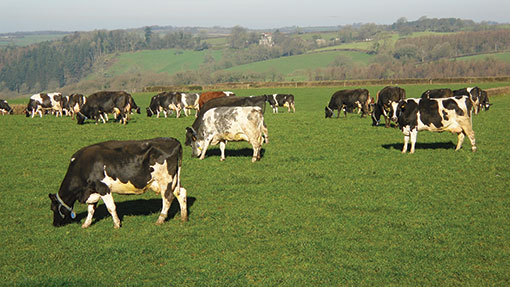
Six dairy businesses are battling for the coveted RABDF NMR Gold Cup 2014. Here we meet the finalists before the winner is revealed on 2 July.
The 2014 judges are RABDF’s Lyndon Edwards (dairy farmer), 2011 Gold Cup winner Tom King and NMR chairman Philip Kirkham.
John Harvey and family, Beeswing, Dumfries
It’s the first time that John and Stuart Harvey, with their mother Margaret, have entered the Gold Cup and they were instantly rewarded by making the top six.
They run 330 Holstein cows and followers on the 208ha farm at Beeswing, Dumfries, and are no strangers to competitions. Regularly in the top 1% of NMR-recorded herds, they also won the Agriscot Dairy Farm of the Year title in 2012.
Three-times-a-day milking achieves a yield of 11,779kg at 4.25% fat and 3.21% protein. Average cell count is the lowest among this year’s finalists at 102,000/ml. This year-round-calving herd achieves a calving interval of 401 days.
After a decade of investment, herd expansion and rising yields, the Harveys will look to develop their market for surplus heifers.
And in anticipation of an oversupply of milk once quotas go, they want to maximise the use of their latest investments in silage pits and slurry storage to improve herd efficiency. This includes making better use of forage and developing new uses for “waste” nutrients.
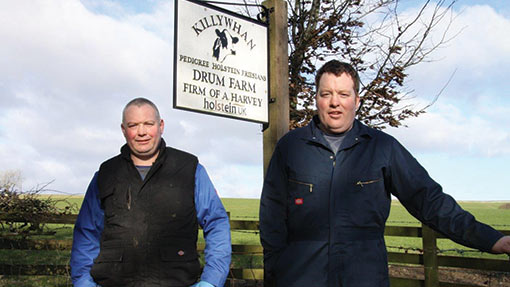
David and James Tomlinson, Preston, Lancashire
The pedigree Bilsrow Holstein herd is once again in the Gold Cup final line-up, after being a runner-up last year.
With an average yield of 10,942kg at 4.34% fat and 3.10% protein on twice-a-day milking, the herd is run by David Tomlinson, wife Sheila and son James. Assistant herdsman James Billington is also central to operations on the 154ha unit at Bilsborrow, Preston.
The progress and success of the herd have always been underpinned by breeding decisions. They look for animals with a type merit between +1 and +2, with good production and avoiding extremes.
All cows are bred to Holstein bulls and any surplus stock is sold. This income from surplus heifers is significant, but it doesn’t undermine their core business of efficient milk production. James – with Mr Billington – sticks to strict herd health and hygiene protocols, particularly in the parlour. There’s no doubt, they feel, that this contributes to the herd’s cell count average of 153,000/ml and a bactoscan of 15.
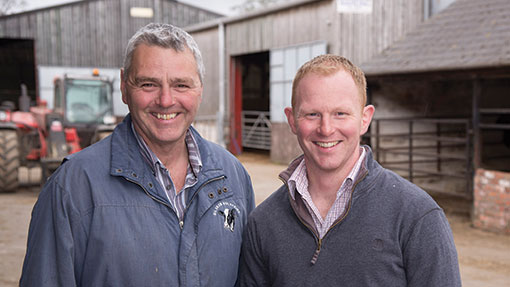
Mark Verity, Clitheroe, Lancashire
Herd health, welfare and nutrition are priorities for the Verity family, who run 350 cross-bred Friesian, Jersey and Swedish Red cows at Whitewell, Clitheroe.
This 283ha farm in the Forest of Bowland rises to 305m above sea level, with an average annual rainfall of 1,800mm.
The family are advocates of extensive grazing and Mr Verity has installed three-and-a-half miles of astroturf and conveyor belt rubber tracks to access fields while avoiding excessive poaching. The herd is autumn-block calved and achieves a calving index of 380 days, with heifers calving at 24.5 months. Herd replacement rate is 22%.
Average milk yield is 8,244kg at 4.65% fat and 3.23% protein on twice-a-day milking. Milk is sold to Arla Foods Amba. The company’s long-term view, post-quotas, is to tap into world commodity prices as well as the UK and European markets.
A new building has enabled herd numbers to be increased. With spare capacity, expansion will continue, hopefully, to 400 cows plus followers.
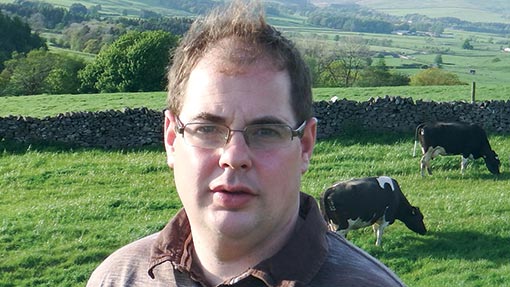
Darren and Stuart McMurran, Banbridge, Co Down
Co Down dairy producers and brothers Darren and Stuart McMurran have made it to the final for a second year running.
This 300-cow Holstein herd yielded 10,829kg of milk in the year ending September 2013 – nearly 300kg up on the previous year – with fat at 3.84% and protein at 3.06% on three-times-a-day milking.
The brothers are targeting yields of 12,000kg by September 2014, but without compromising yields from forage, cow health and welfare. They maximise their use of home-grown yield from forage and use an in-house team to take four cuts of grass silage a year on this 202ha unit. The McMurrans work hard to maintain a consistent ration all year round.
Despite herd size, cows are managed as individuals and follow a bovine viral diarrhoea (BVD), leptospirosis and infectious bovine rhinotracheitis (IBR) vaccination programme. Individual milk samples are routinely tested through Herdwise for Johne’s and results used to minimise disease risks.
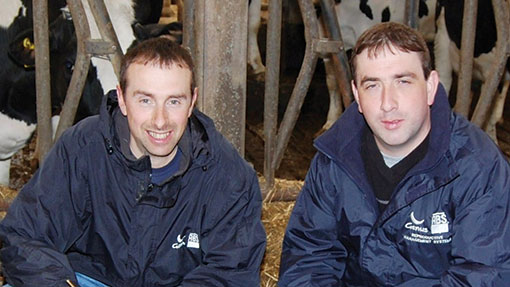
Neil Baker, Haselbury Pluknett, Somerset
Not only has Neil Baker expanded his herd by 200 cows in the past year, he has also increased yields by 1,000kg at the same time.
The average for September 2013 (the judging year) was 10,940kg of milk at 3.71% fat and 3.23% protein.
Cow comfort is a priority and cows are bedded on deep sand cubicles. Animals are carefully monitored and treated to reduce lameness rates and boost fertility.
He now milks 1,200 cows, housed year-round at Rushywood Farm, Haselbury Plucknett, Somerset, and is constantly fine-tuning herd management to get the most from his cows.
In a bid to improve herd genetics, Mr Baker only selects bulls with a lifespan score of at least +0.2, and has culled hard to reduce the genetic gap within the herd. He has invested in improved calf-rearing facilities and hopes a new forager will boost forage quality, enabling him to get more milk from forage.
Further herd expansion lies ahead, alongside an ongoing investment programme. His aim is to increase milk sold to 12,000kg a cow.
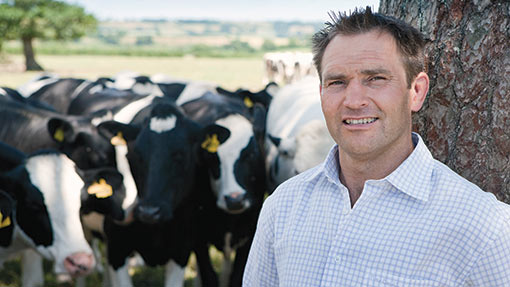
Michael Eavis, Glastonbury, Somerset
More famous for hosting the Glastonbury Festival, Michael Eavis (below right) is looking to make his mark in the world of dairy.
He has spent the past few years implementing some significant changes at Worthy Farm, Glastonbury, Somerset, where herd manager John Taylor (below left) milks 385 cows.
Bringing the calf rearing back in hand has been one such improvement, as has reducing the average age of the herd. But the biggest change has been swapping apple pomace in the ration with maize, which has transformed cow health.
Rolling milk yields are averaging 12,101kg, with a margin over concentrates of £2,619 a cow. They work hard to keep to a simple management system with as few diet changes as possible and this has reduced problems at calving dramatically.
Mr Taylor is choosing bulls based on productive life traits, and vaccinates all heifers to protect against disease. Cows are housed most of the year, grazing after the music festival is over. Energy efficiency is also important, with a large roof-mounted photovoltaic solar array reducing electricity costs, and spring water slashing water bills.
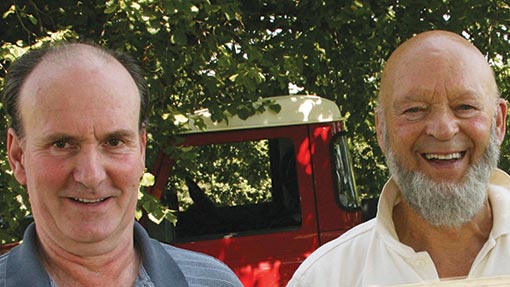
Read all the latest news from the Livestock Event
